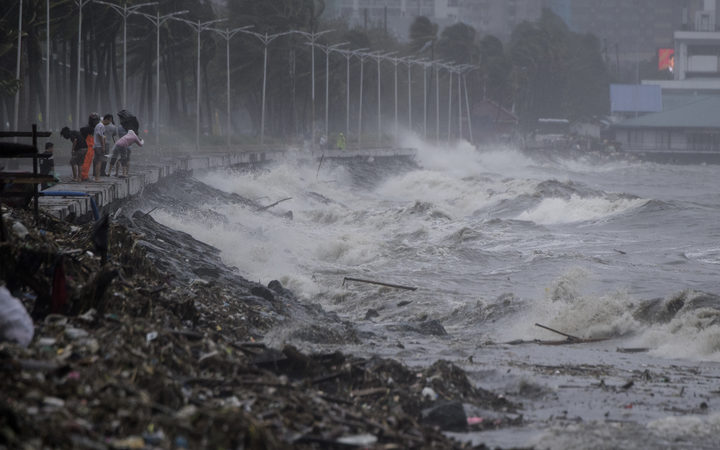
Super Typhoon Mangkhut slammed into the Philippines in the early hours of Saturday, bringing ferocious gale-force winds and pounding rains, as aid agencies warned millions are at risk from rising flood waters and landslides.
Violent storm Mangkhut was the strongest storm anywhere on the planet in 2018, carrying gusts of up to 325 kilometres per hour (200 mph) before it made landfall in Cagayan province, on the northern tip of Luzon, about 1:40 a.m. local time.
The eyewitnesses say the ferocious winds and blinding rain ripped off tin roof sheets and knocked down power at the start of the onslaught.
After the centre of the storm passed the Philippines, Mangkhut’s winds slowed enough for the typhoon to lose its “super” status, but it remains a very powerful storm system with maximum sustained winds of 215 kph (134 mph), equivalent to a category 4 hurricane.
It’s now pounding the Philippines with heavy rain and heading west into the South China Sea toward Hong Kong and southern China.
The forecasters said early on Saturday that the typhoon made landfall in the coastal town of Baggao in Cagayan province nearly two hours after midnight in the northern tip of the main Luzon island. It is an agricultural region of flood-prone rice plains and mountain provinces often hit by landslides.
More than five million people are at risk from the storm, which the Hawaii-based Joint Typhoon Warning Center categorises as a super typhoon with powerful winds and gusts equivalent to a category 5 Atlantic hurricane. There were no immediate reports of major damages or casualties in the region, where a massive evacuation from high-risk areas has been underway for the last two days.
A day earlier, Philippine authorities were evacuating thousands of people from the path of the most powerful typhoon this year, closing schools, readying bulldozers for landslides and placing rescuers and troops on full alert in the country’s north.
With a huge raincloud band 900km wide, combined with seasonal monsoon rains, the typhoon could bring heavy to intense rain that could set off landslides and flash floods. The storm warnings have been raised in almost all the provinces across the main northern island of Luzon, including the capital, Manila, restricting sea and air travel.
Powerful storm Mangkhut was tracked late on Friday in the Pacific with sustained winds of 200km/h and gusts of up to 250km/h. They said the fast-moving typhoon has gained speed as it moves northwestward at 30km/h. Even if the typhoon weakens slightly after slamming ashore, its winds will remain very destructive, government forecaster Rene Paciente said.
Concerns over massive storm surges that could be whipped inland by the typhoon’s winds prompted wardens to relocate 143 detainees from a jail in Cagayan’s Aparri town, officials said.
The typhoon hit at the start of the rice and corn harvesting season in Cagayan, a major agricultural producer, prompting farmers to scramble to save what they could of their crops, Cagayan Governor Manuel Mamba said. The threat to agriculture comes as the Philippines tries to cope with rice shortages.